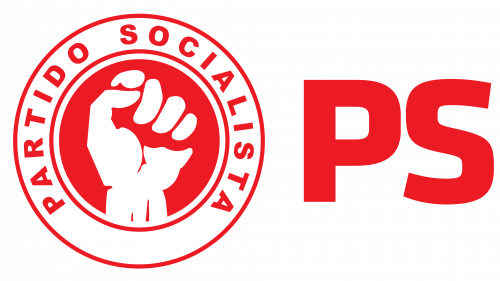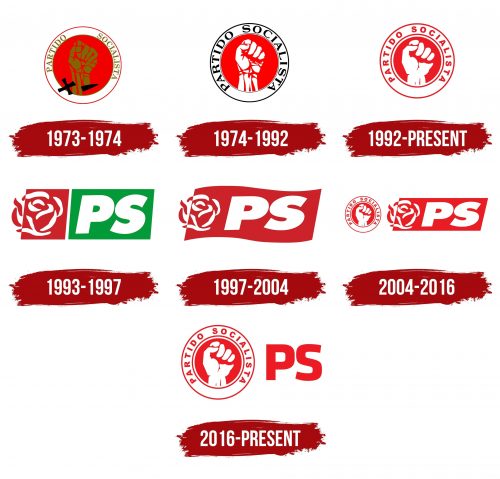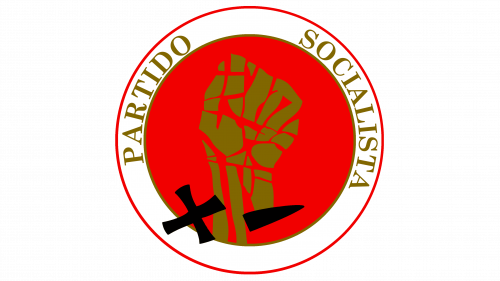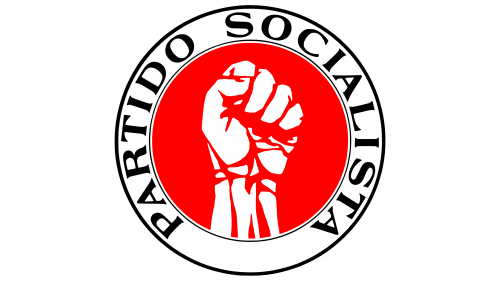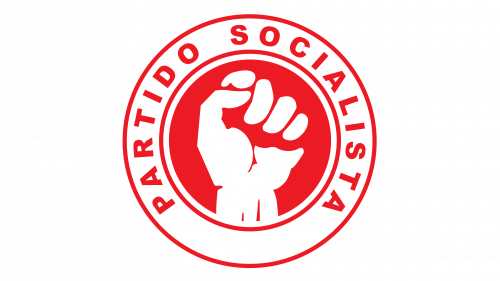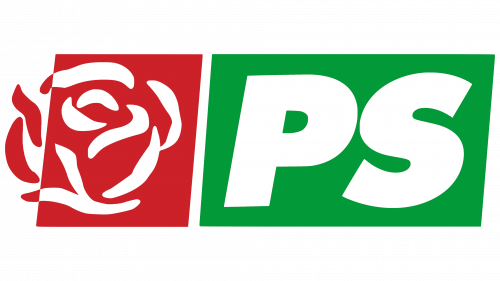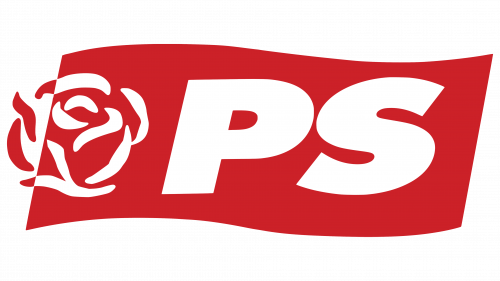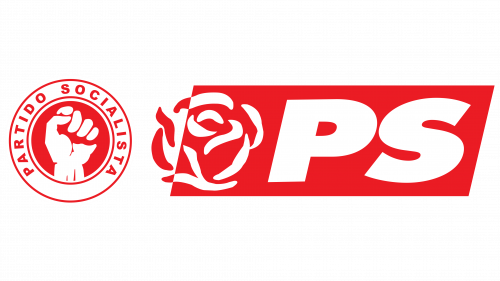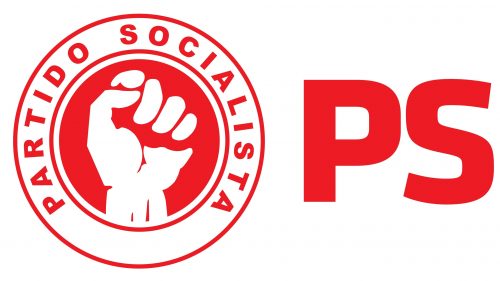The Partido Socialista logo represents a leader symbolized by the fight for freedom and support for the working class. The strong and confident symbol is complemented by elements of flexibility and harmony, highlighting the party’s balanced policy.
Partido Socialista: Brand overview
The Socialist Party of Portugal (Partido Socialista, or PS) was founded on April 19, 1973, in Bad Münstereifel, Germany. Mário Soares, a notable Portuguese politician and dissident, founded the party while in exile due to Portugal’s Estado Novo authoritarian regime. This event marked a pivotal moment in the country’s enduring struggle against dictatorship and the pursuit of democratic reform.
Before the founding of PS, opposition movements in Portugal operated either clandestinely or from abroad. Mário Soares and his associates saw the need for a political entity capable of providing an alternative to the authoritarian regime and the emerging communist movement.
The Carnation Revolution, which occurred on April 25, 1974, drastically changed Portugal’s political scene, enabling the organization to return to the country legally. Mário Soares joined the provisional government as foreign minister, establishing the group as a key player in the new democratic era.
In 1975, the party participated in the elections for the Constituent Assembly, achieving 37.9% of the vote and becoming the largest political force. This success cemented the group’s role in the democratic transition and the drafting of a new constitution.
During the first democratic parliamentary elections in 1976, the organization garnered 34.9% of the vote, forming a minority government with Mário Soares as Portugal’s first democratically elected Prime Minister. The focus was on reinforcing democratic institutions, stabilizing the economy, and initiating the process of joining the European Economic Community.
In 1983, the group won the elections again, with Soares returning as Prime Minister and forming a coalition with the Social Democratic Party. By 1985, the organization had transitioned to opposition.
Despite this shift, the party maintained its influence. In 1986, Mário Soares became President of Portugal, the first democratically elected civilian president in six decades. He served until 1996, playing a vital role in strengthening the country’s democratic institutions.
From 1985 to 1995, the party experienced internal debates and renewal. 1992 António Guterres was elected Secretary-General, initiating a modernization process within the group’s program and structure.
Under Guterres’ leadership, the party won the 1995 parliamentary elections, and he became Prime Minister. His administration implemented significant social reforms and continued Portugal’s integration into the European Union.
The early 2000s brought new challenges. In 2002, the group lost the elections and returned to opposition. José Sócrates later became the party leader and led the organization back to power in 2005, securing an absolute majority in parliament. Sócrates’ government embarked on economic reforms aimed at modernizing the Portuguese economy.
The 2008 global financial crisis had a severe impact on Portugal. Despite the economic difficulties, the party under Sócrates won the 2009 elections, though without an absolute majority. The deepening crisis led to Sócrates’ resignation in 2011 and an electoral defeat for the group.
A new chapter began in 2015 when António Costa became the party leader. Although the group came second in the elections, it formed a minority government with support from other leftist parties. This coalition, known as the “geringonça” (contraption), proved stable and effective.
In 2019, the organization won the elections, increasing its parliamentary representation, with Costa continuing as Prime Minister. The group has pursued a program balancing economic pragmatism with social responsibility.
Meaning and History
What is Partido Socialista?
It is a political party known for its socialist and social-democratic ideologies. The party advocates for social justice, equality, and state welfare provision. It supports policies to redistribute economic resources, state ownership of key industries, and comprehensive social services such as healthcare and education. The Socialist Party operates within the framework of democratic socialism, striving to implement its principles through democratic means and participation in elections. The party often emphasizes workers’ rights, sustainable development, and international solidarity in its platform and policies.
1973 – 1974
The first emblem echoes the symbols of the Communist Party of the USSR. A fist, composed of many individual elements, emphasizes the strength and unity of the working class. Mutual support makes the global movement strong and capable of protecting ordinary people’s interests.
The fist is placed within a red circle, symbolizing leadership and energy. The color represents the blood shed for socialist values. The image immediately attracts attention and demands respect for the political force.
At the bottom, next to the first, are black elements of the hammer and sickle, indicating that the party represents the interests of workers and peasants.
1974 – 1992
The 1974 transformation preserved the overall image of the emblem. However, the fist is depicted in white, and the party name around the circle is in bold black font. This approach reflects the growth of the movement’s supporters.
The change from gold to white emphasizes rejecting imperialist wealth and pursuing simplicity and moderation. The color represents the party’s core values: honesty, openness, and equality.
The bold font indicated the strength of the SP’s position after the Carnation Revolution, marking the path to socialism’s triumph and a new milestone in the party’s development.
1992 – today
During its opposition, the Partido Socialista chose a monochromatic design for its new image. The dark red color emphasizes its shadow position and opposition to the PSD. The emblem signifies the party’s mature and confident stance during this period. The white fist appears freer and less rigid, which softens its impact and conveys a more liberal attitude. The prominence of white in the emblem indicates a readiness for dialogue and cooperation.
The Partido Socialista logo features a circular emblem with a clenched fist in the center. Surrounding the fist is the inscription “Partido Socialista,” written along the circumference of the inner circle. The inner circle containing the fist is red, while the fist and the text are white.
The clenched fist traditionally symbolizes struggle, unity, and strength. In the context of the party’s logo, it represents the readiness to fight for the people’s rights and interests and the pursuit of social equality. The circular shape of the logo emphasizes the integrity and collective efforts of all party members.
The logo underscores the party’s maturity and confidence during its opposition. The white clenched fist on a red background symbolizes the fight for justice and social change. The dominance of white in the fist and text highlights the willingness for dialogue and cooperation, despite being in opposition.
The font used for the “Partido Socialista” inscription is in uppercase letters, giving the logo a sense of gravity and importance. The font style is simple and clear, without unnecessary decorative elements, emphasizing the party’s seriousness and determination.
Red and white are the dominant colors in the logo. Red symbolizes socialist ideals, the party’s energy, and determination to fight for its principles. The white color used for the fist and text symbolizes purity of intentions, openness, and readiness for cooperation.
1993 – 1997
The logo presents a completely new image. The red, white, and green colors correspond to the national flag, emphasizing the participants’ patriotism.
The symbol of the social-democratic rose, partially placed on a red background, represents renewal, leading to the birth of a new viable political force, represented by the green rectangle with large white letters “SP.”
1997 – 2004
The emblem’s change of color scheme to red and white symbolizes victory in the elections. Merging two background elements into one red flag signifies leadership and dynamic activity, stimulating the country’s development and prosperity.
2004 – 2016
The design reflects a balance, embracing a third, centrist path, attempting to harmonize right and left politics. The design also indicates a purification within the party, resulting in the exclusion of many members.
The emblem shows the identity transformation, combining the original symbol, the fist in a circle, with the modern image of the flag and rose. The party maintains its fundamental principles but is moving in a new direction.
The logo marked victory in the European and later Portuguese elections.
2016 – today
In recent years, the Partido Socialista has actively adapted to the changing conditions and challenges of the modern world. The logo, updated in 2018, reflects these changes, demonstrating the party’s readiness for new political and social realities. The fist within the circle represents the historical legacy of the struggle for the rights of workers and oppressed groups. At the same time, the large “PS” letters emphasize the drive for modernization and progress. This symbol serves as a reminder of the socialists’ resilience and determination to pursue a just and equal society.
The Partido Socialista logo combines harmony and compactness. The central element is an image of a fist inside a circle, reminiscent of a seal. This symbol embodies the socialists’ unwavering convictions regarding equality, unity, and strength.
The fist enclosed in a circle symbolizes the party’s power and determination in achieving its goals. It emphasizes the cohesion and unity necessary to advance socialist ideals.
The large red “PS” letters to the right of the main symbol highlight the party’s modernity and renewal. The simple and clear font reflects a confident and understandable policy aligned with current realities.
The emblem’s primary color is red, traditionally associated with socialist and leftist movements. This color symbolizes passion, energy, and the fight for justice.
